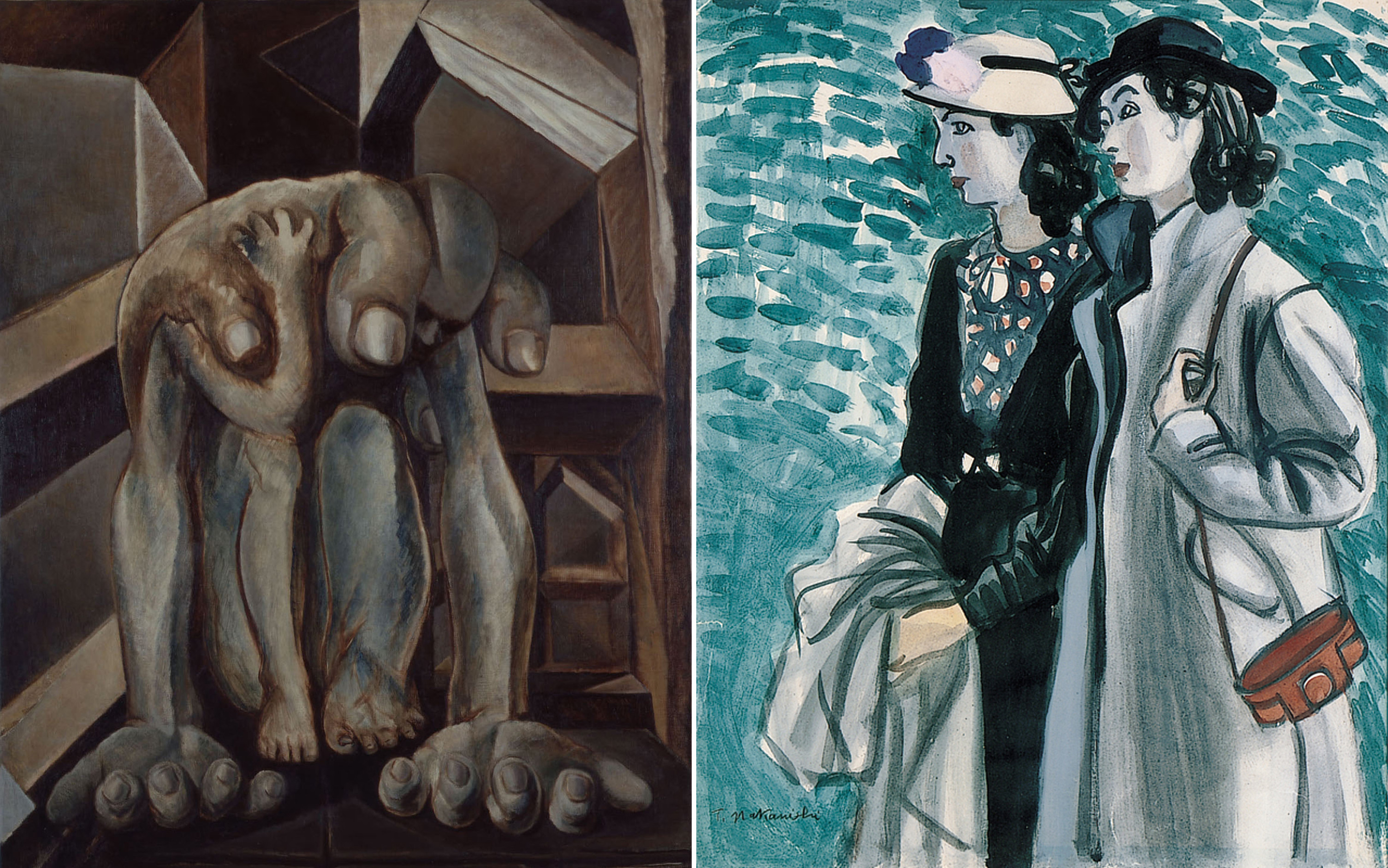The Hyogo Prefectural Museum of Art's current exhibition, "1945±5: The Works that Survived through the Turbulent and Reconstruction Era," showcases modern Japanese art five years either side of the pivotal end of World War II. It addresses oil painting and mostly follows a conventional tale of Japan becoming increasingly culturally conservative as its military conflicts deepened with the artistic freedoms that returned after the war. There is enough artistic diversity, however, to suggest that complexities remain uncharted.
Beginning with the "modern style" of the early 1940s, we get portraits of women, usually in Western dress, in an impressionistic style or with an attenuated expressionism. Cityscapes depict factories, while landscapes and pastoral scenes are in abundance. On the surface, all looks untroubled. When Japan's acquired territories and people are represented, they are done in bright colors and often appear romantically exotic, as in Toshiro Maeda's 1944 sketch of a Manchurian in local costume.
The year of the Asia-Pacific War, 1941, is frequently seen as synonymous with Japan's suppression of subversive cultural elements, including surrealism and abstraction, and the ensuing demise of the avant-garde. Surrealism was yoked with Communism, leading to the poet and critic Shuzo Takiguchi and painter Ichiro Fukuzawa being imprisoned. Taken as a warning to the ideologically like-minded, painters are said to have moderated in the interest of self-preservation. But a number of options remained available.



















With your current subscription plan you can comment on stories. However, before writing your first comment, please create a display name in the Profile section of your subscriber account page.